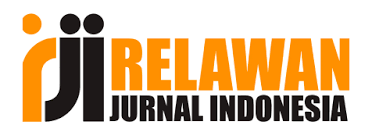Dye Pits and its Economic Contributions in Nigeria’s Post-Pandemic Era
Abstract
The economic contributions of dye pits in the post-pandemic era cannot be overemphasized. It plays a major role in employment generation, skills acquisition, standard of living and indigenous industrial development. This study discussed some traditional and modern dye pits in Nigeria which include the kofar mata dye pits in kano, Abeokuta dye pits, and Ignatius Ajuru University of Education, Port Harcourt modern dye pits. Dye pits are of economic importance to individual students, communities, and the country at large. The paper recommends that more attention should be given to the available dye pits especially in the area of renovation and innovations. The universities should assist in providing raw materials for dyeing of fabrics in order to improve productivity and practical enhancement of the textile students. The paper concludes that, if dye pits are given more attention in Nigeria, the traditional dyed fabrics will compete greatly with foreign fabrics.
References
2. Aero, O.M & Kalilu, R.O.R. (2013). Origin of and Visual Semiotics in Yoruba.
3. Ammayappan, L. & Jose, S. (2016). Sustainable Production Processes in Textile Dyeing.
https://www.researchgate. Net/publication/300112511-sustainable-production-processes-in-textile-Dyeing. Accessed 8th January, 2021.
4. Anna, (2010). Indigo, Ash and Time Mark Nigeria’s Centuries Old-Dye Pits.
www.apnews.com/article/899524e. accessed 31st January, 2021.
5. Apparelsearch.com (2020). Textile/Textile Definition: Definition for the Clothing and Textile Industry. www.apparelsearch.com/definition/fabric/textile_definition-html. Accessed 12th October, 2010.
6. Dahiru, T. (1992). Rini a Kasa Zazzan. Unpublished B.A. Project, Department of Nigerian and African Languages Ahmadu Bello University Zaria.
7. Danmusa, I. (2020). Inside The Dying 522-Year-Old. Dye Pit of Kofar Mata.
https://www.solacebase.com/2020/09/02/inside-the-dying-522-year-old-dye-pit-of-kofar-mata/ Accessed 6th September, 2020.
8. Dutsenwai, S.A. (2008). Influence of Modern Technology on Indigenous Hausa Small Scale Men’s Garment Industry in Zaria. A Postgraduate Seminar Paper Presented at Faculty of Environmental Design, A.B.U.Zaria.
9. Heathcote, D.H. (1976). The Arts of the Hausa. World Islamic Festival Publishing Company Ltd.
10. Highet, C.J. (1984). Skypower. The Inflight Magazine of Nigeria Airways. Aviation Publishing Services Ltd. London March.
11. Jakobsen, M. (2016). An Introduction to the Indigo Dye Styles of Western Africa. https://www.heddels.com/2016/09/an-introduction-to-the-indigo-dye-styles-of-western-africa. Accessed 10th September, 2020.
12. Joe-mgbakiri, U. (2021). Design and construction of modern multi-purpose dye pits in the Department of Fine and Applied Arts. Doctorial Thesis Submitted to school of Graduate Studies, Ignatius Ajuru University of Education, Rumuolumeni, Port Harcourt.
13. Jusri, M. & Idris, M. (2012). Indonesian Batik as a Culture Tradition. Ministry of Industry. Jakarta (Indonesian).
14. Nasir, A. (1984). Traditional Indigo Dyeing in Kano. An undergraduate B.A. Project Department of Industrial Design. A.B.U. Zaria.
15. Newell, A & Shew, J.C. (1972). The Process of Creative Thinking. In: Newell, A., Simon, H.A.,editors. Human Problem Solving. Prentice Hall, Eaglewood Cliffs. New Jersey, U.S.A
16. Oyelere, K. (2017). The ‘Dying’ Dye Pits of Kano. https://tribuneonlineeng.com/dyeing-DyePits-kano. Accessed 3rd September, 2020.
17. Polakoff, C. (1982). African Textiles and Dyeing Techniques. Routledge and Kegan Paul Limited. London.
18. Sodhi, N.S. (2014). Value Addition in Textiles and Clothing testurevaluechain.in/2014/06/06/value-addition-in-textiles-and-clothing. Accessed 20th January, 2021.
















